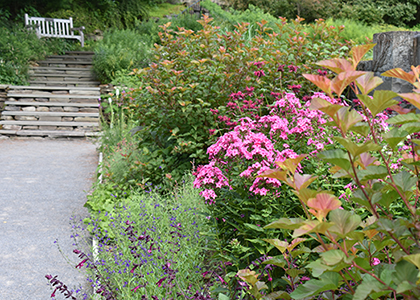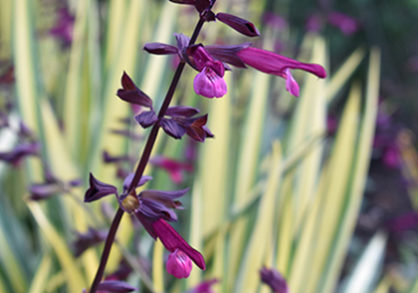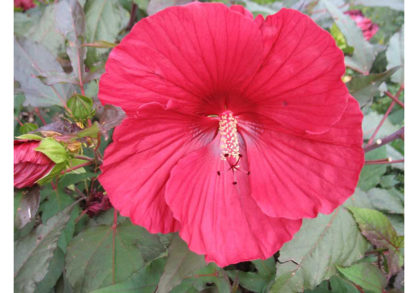
After 30 years of welcoming pedestrian commuters and garden visitors, The North Walk at Cornell Botanic Gardens has been refurbished to display native plants. The North Walk borders the Robison York State Herb Garden, with a straight gravel path dividing the garden into two long borders that run east to west between the Ground Cover Collection and Judd Falls Road.
First installed in 1987, the North Walk initially featured sun-loving perennials planted in large groupings to cover large spaces in perennial borders. Three decades later, the garden was due for a makeover, and under a theme that expresses Cornell Botanic Garden’s mission to conserve biological and cultural diversity.
Inspired one early autumn afternoon by golden light illuminating the variegated blades of Yucca filamentosa ‘Color Guard’, I envisioned the garden filled with plants native to the Americas. To achieve this, we removed non-native plants and relocated them to other gardens. Fortunately, many cultivars of native North American species already existed in the garden and were divided to increase their numbers and rearranged to achieve a sense of balance and harmony.
The result is a curated collection of small flowering trees, shrubs, and hardy perennials native to North America interplanted with non-hardy plants that are native to Central and South America.
Among the earliest flowers to bloom are those of a small native tree, Amelanchier ‘Autumn Brilliance’, commonly known as Service Berry or June Berry. Delicate white blossoms adorn its branches in late April and early May providing much needed nectar to bees. Following in late May and early June are the pale- yellow flowers of Baptisia ‘Carolina Moonlight’, the light-blue, star shaped flowers of Amsonia ‘Seaford Skies’ and the shimmering white flowers of Phlox ‘Minnie Pearl’.
From early July through fall, the garden is bursting with a colorful ensemble of hardy North American perennials such as Echinacea ‘Cantaloupe’, Lobelia ‘Starship Deep Rose, Phlox ‘Rose Dark Eye’ and Bee Balm—Monarda didyma ‘Peter’s Fancy Fuchsia’. A variety of Central and South American flowering plants are annually planted among the hardy perennials including Brazilian Verbena—Verbena bonariensis and several ornamental Salvia cultivars, commonly known as flowering sage, as well as brightly colored Zinnias. On warm, dry days the air vibrates with the beating wings of pollinators such as honeybees, bumble bees, Swallowtail and Monarch butterflies and Ruby-throated hummingbirds feasting on the nectar of these jewel-toned flowers.
The garden reaches a crescendo during the month of August when the large, showy flowers of North American hardy Hibiscus cultivars bloom revealing the full palette of colors and composition of the garden. Hibiscus cultivars within this collection include Hibiscus ‘Raspberry Rose’, Hibiscus ‘Midnight Marvel’, Hibiscus ‘Mars Madness’, Hibiscus ‘Copper King’, and Hibiscus ‘Peppermint Schnapps’.
The reimagined North Walk garden is available both in-person and virtually. Enjoy many of the plants through the virtual collection below.
Pamela Shade is the former curator of the Robison York State Herb Garden.
Exlore plants of the Americas
View a collection of many of the plants growing in this colorful garden!


